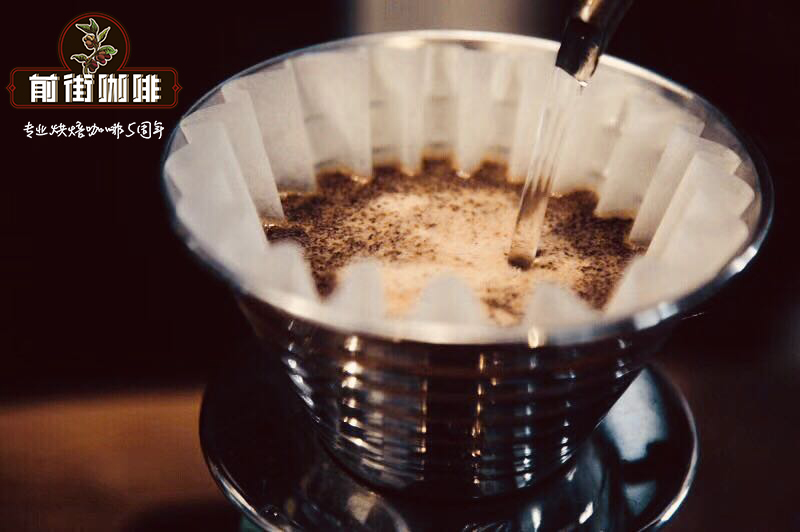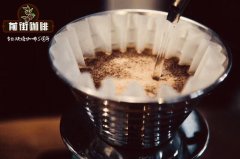What is the coffee drying method? there are more than three varieties of coffee beans.

Professional coffee knowledge exchange more coffee bean information please follow the coffee workshop (Wechat official account cafe_style)
A brief introduction to Qianjie-Coffee treatment
The most traditional method is sun treatment; in areas where there is more rain, water washing is often used in areas where quality control and mass production are more concerned; and the new environmental protection treatment between sun exposure and water washing is semi-washing, which is slightly improved and turned into honey treatment. In recent years, more and more novel treatments have been used to add flavor, such as anaerobic treatment, fermentation in rum barrels to get more wine flavor, or static in wine barrels, and so on. So the common ones are sun exposure, water washing, semi-water washing, and the less common ones are anaerobic, Lamb barrel fermentation, wine barrel static and so on.
The oldest and direct way is to bask the coffee cherries in the sun. About a week later, the coffee cherries will be tanned dark. At this time, it is easy to remove the sun-dried exocarp, pulp, pectin and endocarp by machine. In the end, the defective beans will be picked out by him and it will be done. The advantage of sun treatment is low cost, and in the process of sun exposure, the pulp pectin will ferment and taste into the coffee beans, so that the coffee beans have higher fruit flavor, sweetness and wine flavor, but less sour taste.
The washing method first removes the irrelevant impurities of the coffee cherry in the sink, and then uses the pulp removal machine to remove the skin and pulp, but there is still a pectin layer and endocarp that can not be removed, so it is put in the fermentation tank for microorganisms to eat the pectin layer. After eating, wash it again with water, dry it in the sun, and then use a sheller to beat off the endocarp to get the coffee beans. The last thing is to pick defective beans.
The advantage of washing treatment is that everything depends on machines and manual treatment, less affected by the climate, stable quality, that is, it is said to drink very clean and clear. At the same time, because of the different fermentation methods, there are more fruit aroma, sour taste, because there is no pulp involved in fermentation in the process of washing, so coffee beans will retain more acid substances such as malic acid and citric acid.
To improve the problem of large-scale use of water resources in water washing treatment, as well as the problem of excessive cleanliness of flavor and lack of personality, many places adopt the method of "mixing sun and water washing", which is called semi-washing, and after half-washing is improved, it will become honey! Costa Rica, for example, is good at honey treatment to add flavor to coffee beans.
At first, semi-washing uses water to remove impurities, peel and pulp, but instead of microbes to remove the pectin layer, a mucous membrane remover is used to remove the pectin, then bask in the sun and dry, and then use the sheller to remove the endocarp. Finally, pick out the problematic coffee beans.
And honey treatment does not use mucous membrane removal machine to remove pectin, just take it to the sun, the process of pectin will ferment, increase the flavor of coffee beans. If only about 10% of the pectin is left in the sun, it is called "white honey treatment". The coffee tastes clean and is more like washing; only about 25% of the pectin is left in the sun, which is called "yellow honey treatment" because the coffee beans will turn yellow. Leaving about 50% of the pectin is called "red honey treatment"; 100% of the pectin left to bask in the sun is "black honey treatment". The more pectin left, the more rich, complex and changeable the flavor, but also the more difficult to deal with and the longer exposure time.
Honey treatment is called honey treatment because the pectin layer is sticky, like honey, not because of what honey we add in the process. After drying, use a sheller to remove the pectin and endocarp to get the coffee beans, and then pick out the defective beans.
The key to the quality of beans lies in their varieties. Different producing areas produce different varieties of beans, and different varieties of beans have different flavors. Different coffee producing areas all over the world have their own unique flavor. It is conservatively estimated that there are thousands of coffee varieties in the world.
Knowledge expansion: Sumatra wet peeling treatment can not only adapt to the rainy season, but also has a unique soil flavor, herbal flavor, mellow and less sour taste.
In short: Qianjie is a coffee research hall, happy to share the knowledge about coffee with you, we share unreservedly just to make more friends fall in love with coffee, and there will be three low-discount coffee activities every month. The reason is that Qianjie wants to make more friends drink the best coffee at the lowest price, which has been Qianjie's tenet for 6 years!
END
Important Notice :
前街咖啡 FrontStreet Coffee has moved to new addredd:
FrontStreet Coffee Address: 315,Donghua East Road,GuangZhou
Tel:020 38364473
- Prev

Is the coffee honey treatment one of the ways to add honey to know how to treat coffee beans?
Professional coffee knowledge exchange more coffee bean information please follow the coffee workshop (Wechat official account cafe_style) front street-introduction to coffee honey treatment honey treatment: what is honey treatment: according to its original meaning, its scientific name should be pulp natural, the same as the traditional wet treatment, it removes the thick peel of coffee cherries and retains the sticky pulp layer below it (mucilag)
- Next

A brief introduction to the different treatment methods of sun-dried and washed coffee, such as sour and sweet fruit coffee beans
Professional coffee knowledge exchange more coffee bean information please follow the coffee workshop (Wechat official account cafe_style) front street-coffee tanning, washing taste introduction, also known as natural treatment (Sun-dried, Dry, Unwashed or Natural Process), is the most traditional treatment, coffee beans with peel and pulp, directly exposed to the sun, and then ground off
Related
- Beginners will see the "Coffee pull flower" guide!
- What is the difference between ice blog purified milk and ordinary milk coffee?
- Why is the Philippines the largest producer of crops in Liberia?
- For coffee extraction, should the fine powder be retained?
- How does extracted espresso fill pressed powder? How much strength does it take to press the powder?
- How to make jasmine cold extract coffee? Is the jasmine + latte good?
- Will this little toy really make the coffee taste better? How does Lily Drip affect coffee extraction?
- Will the action of slapping the filter cup also affect coffee extraction?
- What's the difference between powder-to-water ratio and powder-to-liquid ratio?
- What is the Ethiopian local species? What does it have to do with Heirloom native species?

